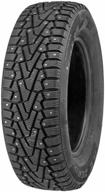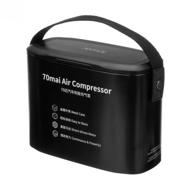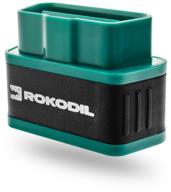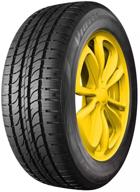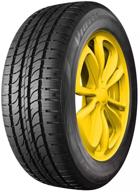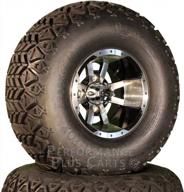The Critical Role of Tires and Wheels for Your Vehicle
Having properly functioning tires and wheels is absolutely essential for the safety and performance of your vehicle. Yet many drivers do not pay close enough attention to their tires and wheels until there is already a serious problem. Don't let that happen to you! Read on to understand why tires and wheels deserve your attention.
Tires - The Only Point of Contact
Your tires are quite literally the most critical component on your vehicle. After all, they are the sole point of contact between several tons of metal and glass and the road beneath you. Tires need to perform an incredible number of duties simultaneously:
- Grip the road to avoid skidding and hydroplaning
- Cushion and absorb impacts from potholes and debris
- Withstand the force of high-speed cornering and braking
- Roll smoothly at highway speeds with minimal noise or vibration
Given these demands, it's no wonder that tires require careful maintenance and eventual replacement. Worn out or improperly inflated tires put you and your passengers at risk.
Wheels - More Than Meets the Eye
While tires rightfully get more attention, your wheels are more complex than you might think. Wheels must:
- Support the weight of the vehicle
- Withstand impacts from potholes and curbs
- Allow smooth rotation at high speeds
- Work harmoniously with suspension and steering components
Wheels take quite a pounding and deserve regular inspections. Loose or damaged wheels can cause vibrations, affect handling, and even lead to catastrophic failures at speed.
Maintain Your Tires and Wheels
Now that you better understand their importance, be sure to keep your tires and wheels in top shape. Check inflation pressures at least monthly, inspect for damage and wear, and replace components before they become unsafe. With proper care, your tires and wheels will provide many miles of safe, comfortable driving.
Choosing the Right Tires for Your Vehicle
With so many tire options on the market, it can be tricky to select the right ones for your specific needs. However, understanding a few key factors can simplify the process.
Seasonal Performance
One of the biggest considerations is seasonal performance. Here are the main tire types:
- All-season - Designed to perform decently in all seasons, but not optimized for any one.
- Summer - Offer superior warm weather grip but get rigid and slippery in winter conditions.
- Winter - Made of specialized rubber to provide traction on snow and ice, but tend to wear more quickly in warm weather.
Many drivers in temperate climates can safely use all-season tires year-round. But switching between summer and winter tires can benefit drivers in regions with more extreme seasonal variations.
Tire Sizes
It's critical to choose a tire size specifically engineered to fit your vehicle's wheels. Tire size is specified using a combination of numbers and letters, such as P215/65R16. Here's what they mean:
- P - Passenger car tire (versus LT for light truck)
- 215 - Tire width in millimeters
- 65 - Aspect ratio (tire section height as percentage of width)
- R - Radial construction
- 16 - Wheel diameter in inches
Consult your owner's manual or existing tire sidewall to determine the ideal replacement size. Even a small mismatch can impact handling and create safety issues.
Similar products
Tread Depth
Deeper tread provides better wet weather performance and longer tire life. Most standard tires have 10/32" to 12/32" of tread when new. Tires are legally worn out at 2/32", but many experts recommend replacing them at 4/32" or 5/32" to maintain optimal grip. When in doubt, check your tread depth against the wear bars built into the grooves.
Choosing the right tires for your specific vehicle and driving needs is important for performance, safety and longevity. Consult an expert installer if you have any questions!
All-Season vs. Summer vs. Winter Tires
When it's time to replace your tires, one of the key decisions is choosing between all-season, summer, or winter tire models. What are the differences and which is right for your vehicle?
All-Season Tires
As the name implies, all-season tires are designed to perform adequately in all conditions. Their tread patterns and rubber compounds aim to balance dry and wet traction, noise levels, ride comfort, and treadwear.
- Pros: Decent overall performance, good value, no need to swap sets seasonally.
- Cons: Not specialized for maximize performance in any one condition.
For drivers in temperate climates with mild winters, all-season tires are typically sufficient year-round. They offer convenient, balanced performance for the money.
Summer Tires
Summer tires are engineered for warm, dry conditions. They use a soft rubber compound and an aggressive tread pattern to grip the road.
- Pros: Superior dry grip and handling, quicker acceleration, shorter braking distances.
- Cons: Stiffness makes them unsafe in winter conditions, faster wear in warm weather.
Drivers wanting maximum performance during summer should consider dedicated summer tires. Just be prepared to swap them out once temperatures drop below 45°F.
Winter Tires
Also known as snow tires, winter tires offer the best cold weather and ice/snow traction. Their tread features more grooves and sipes to "bite" into wintery surfaces.
- Pros: Safer handling in ice, snow, and sub-freezing temps.
- Cons: Noisy on dry roads, shorter tread life in warm weather.
In regions with heavy snowfall, winter tires are highly recommended for safety. Swap them on once temperatures dip below 45°F for the season.
Evaluating your local climate and driving needs will determine the ideal tire for each vehicle. An expert tire shop can offer personalized recommendations.
Understanding Tire Sizing Measurements
The combination of numbers and letters printed on the sidewalls of tires refers to important measurements that determine proper fit and performance. Learning how to interpret tire sizing can help you choose optimal replacement tires.
Key Components
Modern tire sizing follows a standardized format of letters and numbers, such as: P215/60R16 94H. Here is what each component means:
- P - Vehicle type (P indicates Passenger car)
- 215 - Section width in millimeters
- 60 - Aspect ratio (tire height to width ratio)
- R - Radial construction
- 16 - Rim diameter in inches
- 94 - Load index (weight carrying capacity)
- H - Speed rating
Section Width
The three-digit number indicates the tire's width from sidewall to sidewall in millimeters. A wider tire typically provides more traction and handling ability.
Aspect Ratio
This two-digit number represents the tire's profile height as a percentage of its width. So a 60 aspect ratio means the tire's section height is 60% of its width.
Rim Diameter
This specifies the wheel rim diameter in inches that the tire is designed to fit. It is vital to match the tire's rim diameter to the actual wheels on your vehicle.
Load Index
The two or three-digit load index identifies how much weight the tire can safely support when properly inflated. A higher number means the tire can carry more weight.
Speed Rating
The speed rating is a letter that indicates the maximum safe speed capability of the tire. For example, a "V" rating is for up to 149 mph, while "Z" is for over 149 mph.
Checking your existing tires for the correct sizing measurements ensures you get optimal replacement tires tailored for your vehicle's wheels and performance needs.
How Tire Tread Impacts Traction and Longevity
The grooves and patterns on your tires' tread play an important role in traction, handling, and longevity. Understanding how tread design affects performance can help you make informed decisions when purchasing replacement tires.
Traction and Grip
Tread patterns are engineered to channel away water and enhance grip:
- More grooves = better water evacuation = better wet/snow traction
- More sipes (thin slits) = more biting edges = better snow/ice traction
- Stiffer shoulder blocks = improved cornering and turn response
High performance tires feature optimized tread designs for responsive handling and braking across various conditions. All-season tires balance wet and dry performance with comfort and noise levels.
Treadwear
As the tread wears down over time, traction is reduced. Tires are legally considered worn out at 2/32” of remaining tread depth, when the wear bars become visible between grooves. However, performance starts declining well before that point:
- 8/32” - Excellent wet and winter traction
- 5/32” - Noticeable drop in wet weather handling
- 3/32” - Reduced snow and ice traction
Quality touring tires can last up to 60,000 miles or more before reaching 2/32" tread depth, while high performance tires average closer to 20,000-30,000 miles.
Replacing at 4/32” Minimum
Many experts recommend replacing tires once they reach 4/32” of remaining depth. At this point, wet grip is compromised while still above the legal limit. Replacing early optimizes safety and avoids hydroplaning risks.
Monitoring your tread depth periodically ensures you get the full potential from your tires while replacing them at the ideal time.
How Wheel Size Impacts Ride and Performance
Wheels not only contribute to the look of a vehicle, but also play an important role in ride quality, handling, and performance. The size of the wheel affects various aspects of driving.
Smaller Wheels
Smaller diameter wheels, such as 15 or 16 inch, tend to provide:
- Smoother ride - Shorter sidewalls flex more to absorb bumps
- Better fuel economy - Less rotational mass to accelerate
- Slower handling - More flex can reduce responsiveness
- Lower cost - Both wheels and tires are cheaper
Smaller wheels paired with taller tire sidewalls are common on basic commuter cars focused on comfort and efficiency over performance.
Larger Wheels
Larger wheels, 18 inches and above, generally deliver:
- Sportier handling - Stiffer sidewalls increase responsiveness
- Better braking - Larger rotors and calipers fit
- Lower-profile appearance - Less sidewall, more rim
- Higher cost - Big wheels and tires are pricier
Large diameter wheels are common on performance cars and many SUVs, improving steering response and braking at the expense of some ride comfort.
Wheel Fitment
Crucially, wheels must be matched to the proper tire size and suspension design for that particular model:
- Too small - Handling/braking compromised, fender rub possible
- Too large - Ride harshness, steering effort increased
- Incorrect offset - Potential rubbing, stability issues
Consult your owner's manual for recommended wheel sizes and offsets to optimize performance safely.
Wheel Materials - Advantages of Steel, Alloy, and More
Wheels are constructed from various materials, each with their own strengths and weaknesses. Understanding the properties of different wheel materials can help you choose the ideal ones for your vehicle.
Steel Wheels
Steel remains a popular choice for original equipment wheels. Benefits of steel include:
- Strength and durability
- Dent and corrosion resistance
- Affordability
However, steel is heavier than alloy and can suffer from fatigue cracks over time. Most steel wheels use hubcaps or wheel covers rather than showing the basic rim design.
Alloy Wheels
Aluminum alloy wheels offer a lighter weight alternative. Advantages include:
- Lighter weight improves acceleration and fuel economy
- More design options from cast construction
- Better heat dissipation
But alloy wheels are more expensive to produce and can be prone to cracking from impacts. Regular cleaning is required to prevent corrosion.
Custom Wheels
Aftermarket custom wheels allow you to upgrade both style and performance. Types include:
- Forged - Extremely strong and lightweight
- Modular - Interchangeable components
- Rotary forged - Innovative layered design
High-end custom wheels offer cutting-edge performance but demand proper fitment and regular care to justify the investment.
Other Exotic Materials
Some exotic supercars use more advanced materials for ultimate performance:
- Magnesium - Extremely light, more brittle
- Carbon fiber - Strong yet lightweight
- Hybrid - Steel/alloy mixes optimize properties
The right wheels can significantly enhance your vehicle's capabilities and appearance.
Another interesting products
Strategies to Get Amazon Prime While Making a Profit
Amazon Prime offers fast free shipping and other benefits, but the membership can be pricey. Here are some creative ways to get Prime temporarily or long-term while actually making money in the "Automotive Tire & Wheel Assemblies" category.
Sell Unwanted Items
Scan your home for any unused items in good condition. Electronics, video games, books, home goods and more tend to sell well on Amazon. Price competitively and ship via Fulfilled by Amazon for Prime-eligible listing. The proceeds from sales can pay for your Prime membership.
Amazon Rebates
Various affiliate sites provide cash back or Amazon credit when you sign up for Prime or other products. Look for deals like $40 Amazon gift cards for Prime signup. Stack rebates from Rakuten, TopCashback, etc. to maximize savings.
Credit Card Rewards
Check if any of your credit cards offer statement credits or bonus points for Amazon purchases. Some cards give $50+ in rewards for paying an annual Prime membership fee. Activate those deals before signing up.
Split Membership Costs
See if a family member or friend wants to split the cost of an Amazon Household Prime membership. Two adults can share the benefits while each paying only $79 annually or $7 monthly. Great way to save 50%.
Amazon Reload Promotion
Occasional Amazon promotions give you a $10 credit if you reload your gift card balance by $100+. Time those offers right, and you could fund a big chunk of Prime with bonus credits.
Amazon Business for Work
If you operate any kind of small business or side gig, look into a free Amazon Business Prime trial. It unlocks bulk discounts and tax exemptions on items you need for work. Adds even more value.
With the right strategies, you can effectively get an Amazon Prime membership at little or no true cost to you. Just invest some time to maximize available promotions, cash back, and reward programs.
Top products in 🔩 Automotive Tire & Wheel Assemblies
Discover The Best Automotive Tire & Wheel Assemblies For Your Vehicle
- Discover the best Automotive Tire & Wheel Assemblies products for your vehicle needs.
- Find solutions to your tire and wheel problems with Automotive Tire & Wheel Assemblies.
- Get the best deals on Automotive Tire & Wheel Assemblies products.
- Upgrade your vehicle's performance with Automotive Tire & Wheel Assemblies.
- Explore a wide range of Automotive Tire & Wheel Assemblies products for your vehicle.
- Improve your driving experience with Automotive Tire & Wheel Assemblies products.
- Choose from a variety of high-quality Automotive Tire & Wheel Assemblies products.






